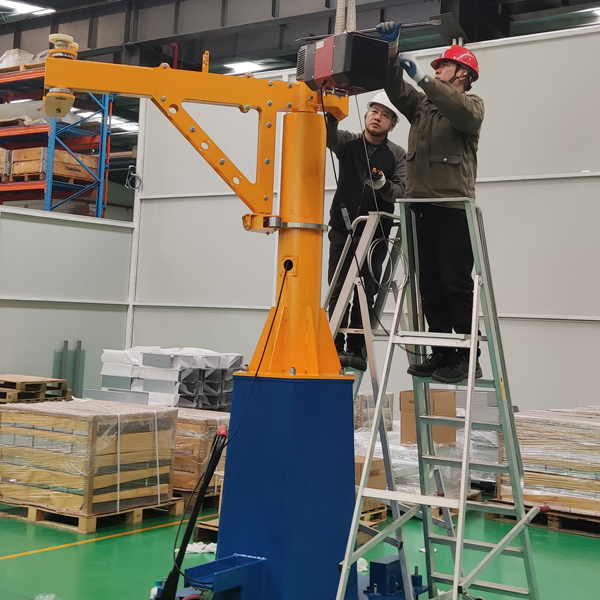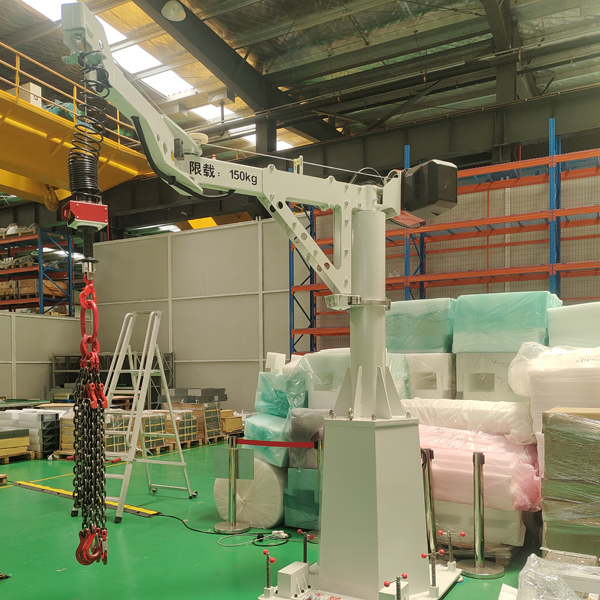In the field of modern industrial production and material handling, efficient, safe and intelligent equipment has become the key to improving work efficiency and ensuring work quality. As an innovative lifting equipment, the folding-arm intelligent hoist is gradually showing great advantages in various workplaces with its excellent performance and unique design.

2. Basic introduction to folding arm intelligent hoist
1. Compact structural design
The folding arm intelligent hoist has a compact structure and takes up less space than traditional lifting equipment, which makes it easily adaptable to
various workplaces with limited space, whether it is a small workshop corner or a dense production line. Function with ease.
For example, in the workshops of some small manufacturing companies, space is often tight, and the small size of this elevator will not hinder the production
process.
2. Easy operation and maintenance
Simple and convenient operation is one of its distinctive features. Operators can get started quickly without complicated training, which greatly reduces labor
costs and training time. At the same time, maintenance is relatively easy, reducing the possibility of equipment failure due to improper maintenance.
Taking a factory as an example, new employees can operate the hoist proficiently after a short period of instruction, and regular maintenance of the equipment
can also be completed in a short time.

4. Safety protection device escorts
1. The key role of the limiter
The limiter can limit the lifting height and walking range to prevent safety hazards caused by overloading and over-height. It is like a loyal guard, always
guarding the safety boundary of lifting operations.
In some workplaces with limited space, the role of limiters is particularly obvious, preventing the truss crane from colliding with surrounding facilities.
2. Monitoring function of overload protector
The heavy-load protector can monitor the weight of the lifting object in real time and will automatically stop operation once it exceeds the rated weight.
This function effectively protects the safety of equipment and personnel and avoids accidents caused by overweight.
When lifting heavy machinery parts, the timely response of a heavy-duty protector can prevent equipment damage and personnel injuries.
5. Regular maintenance and inspection to ensure long-term stability
1. Inspection and maintenance of key components
Maintenance personnel regularly conduct detailed inspections and maintenance of key components such as electric hoists, limiters, and heavy-load protectors.
Discover and deal with potential problems in a timely manner to ensure that the equipment is always in good operating condition.
For example, by regularly checking the chains and hooks of electric hoists, wear and damage can be detected in advance and replaced in time to ensure the
safety of lifting operations.
2. Repair and replace damaged parts promptly
Maintenance personnel will quickly repair or replace any damaged parts found. This timely response can effectively prevent small problems from turning into
major failures and extend the service life of the equipment.
For example, when a limiter failure is found, repair or replace it immediately to ensure its normal operation and ensure the safe range of lifting operations.



 0086 17717607077
0086 17717607077
 0086 (021) 5999 9072
0086 (021) 5999 9072
 market@chnhoist.com
market@chnhoist.com







